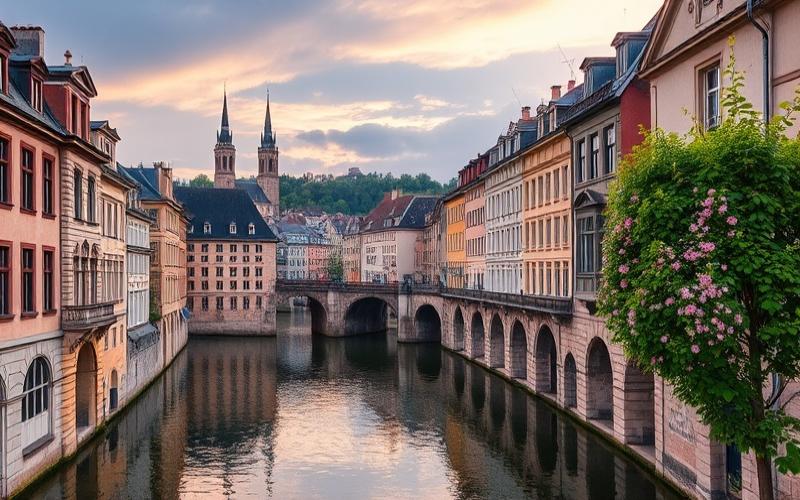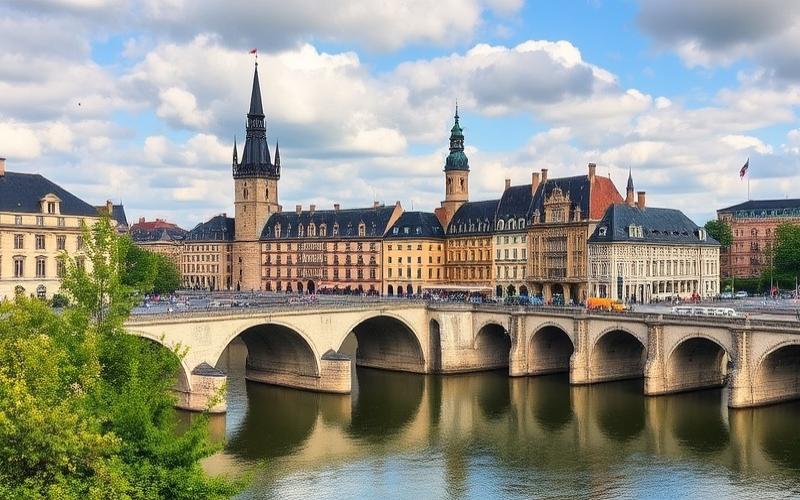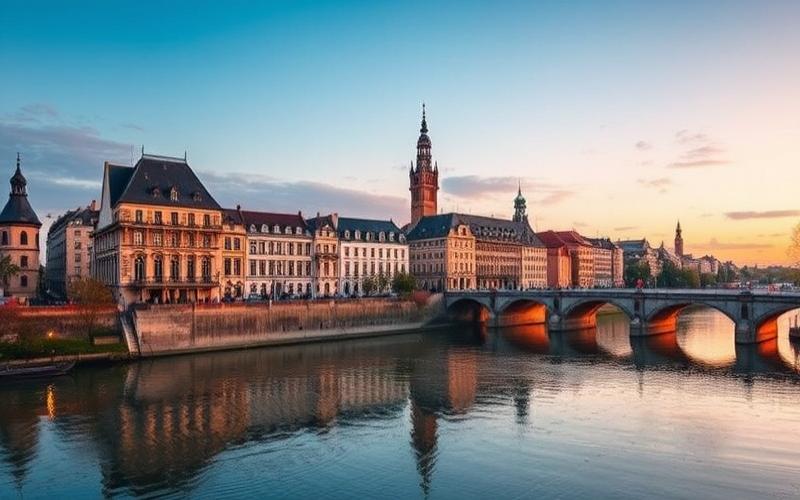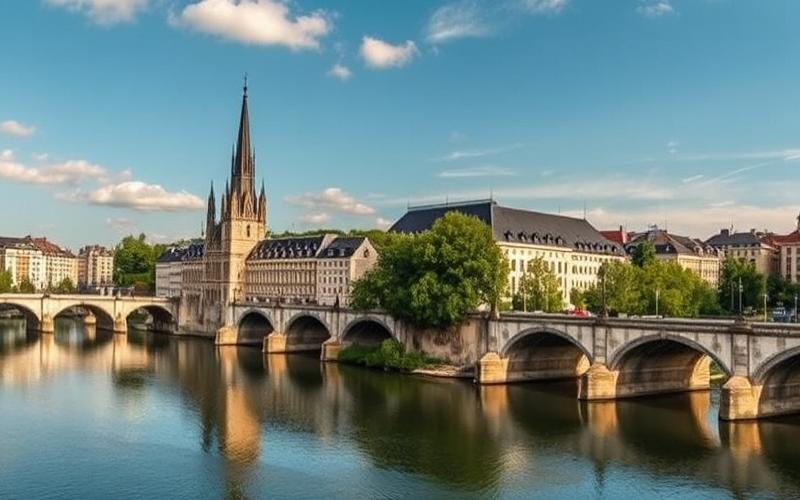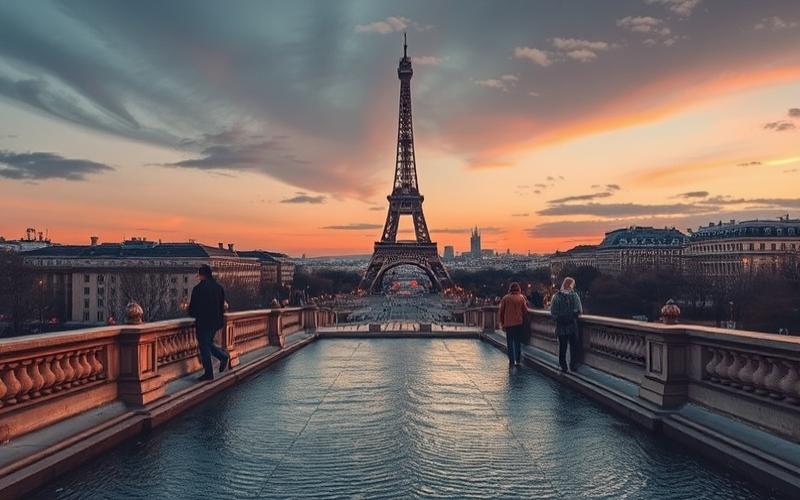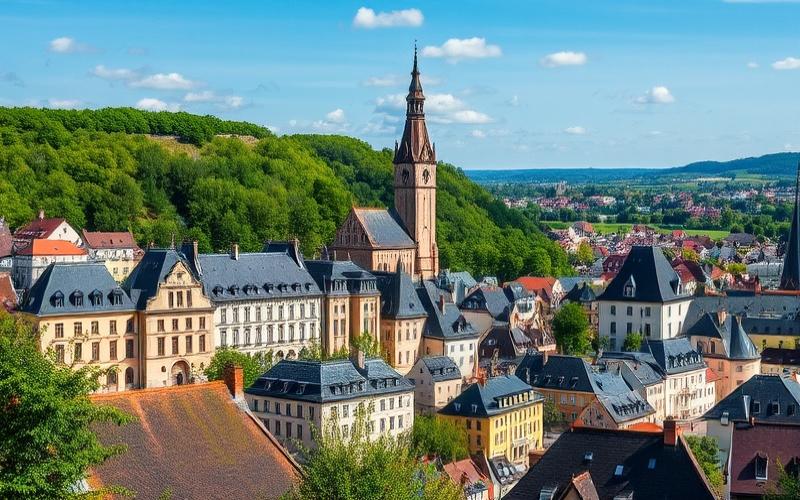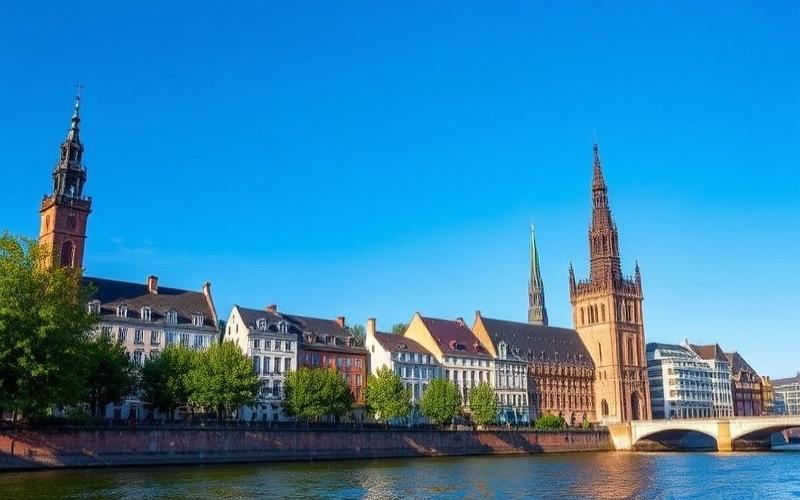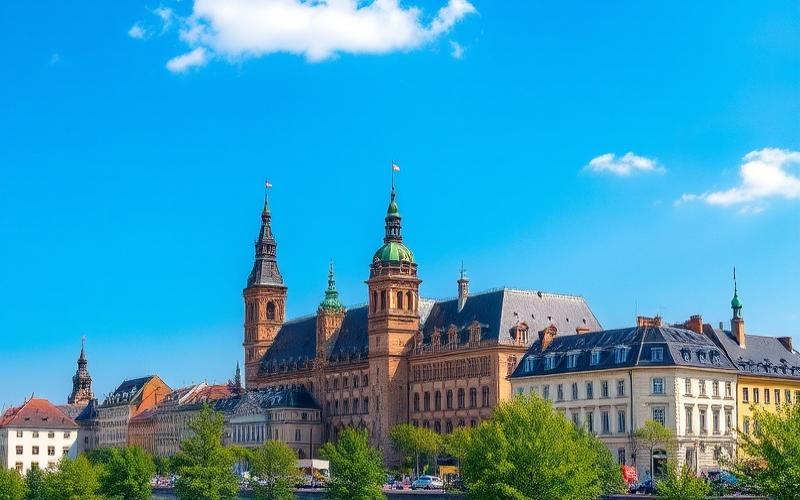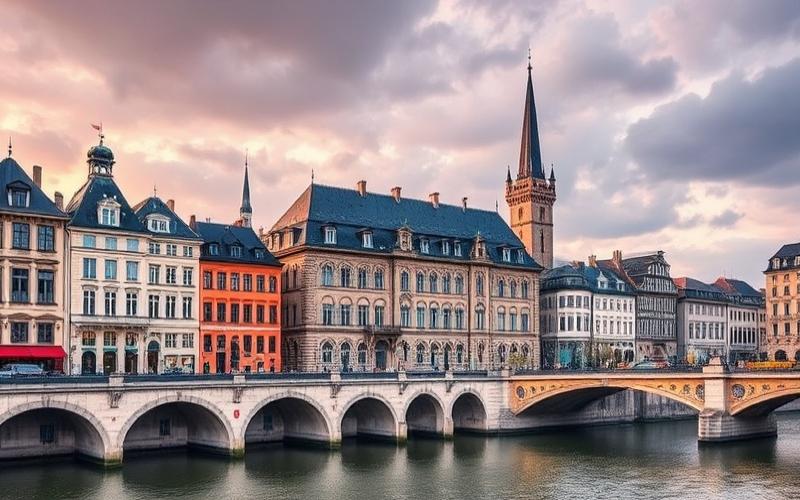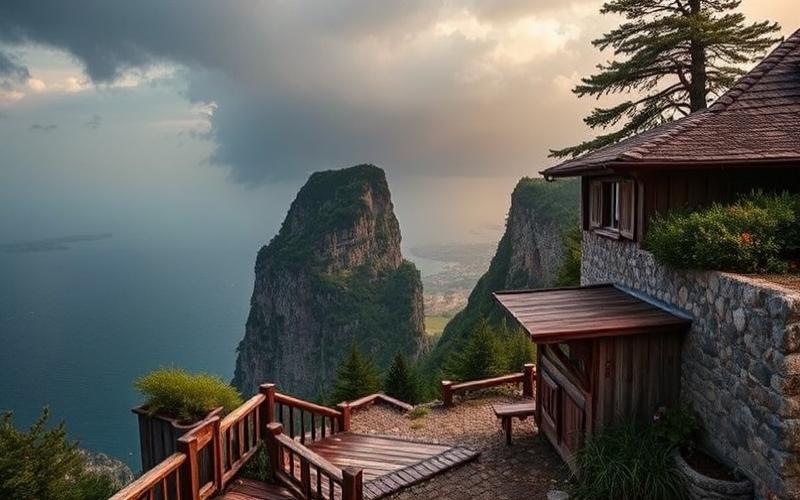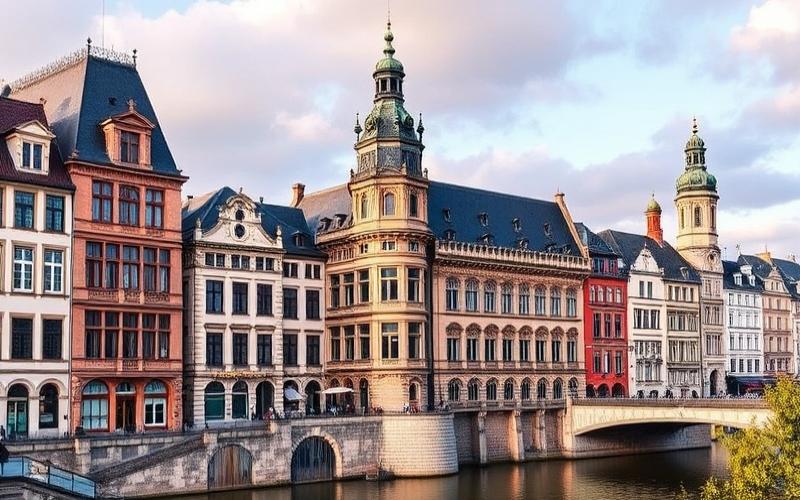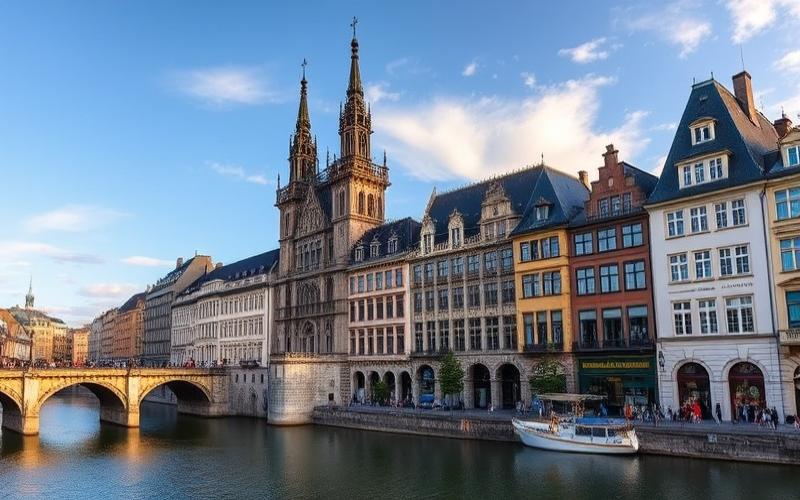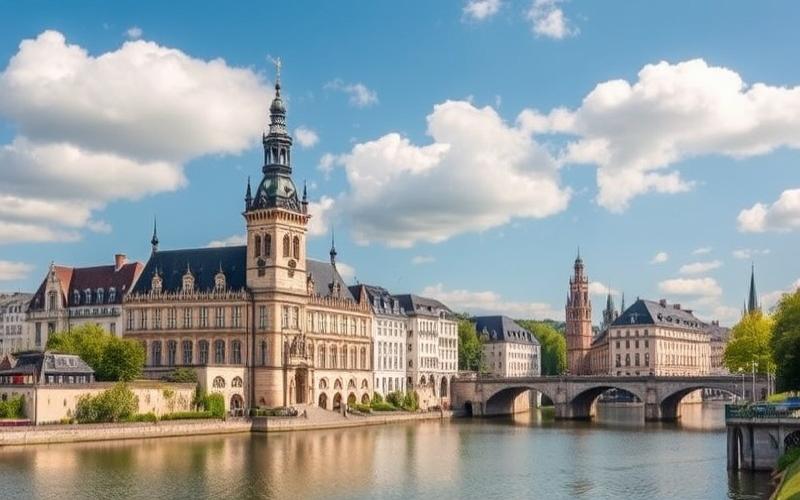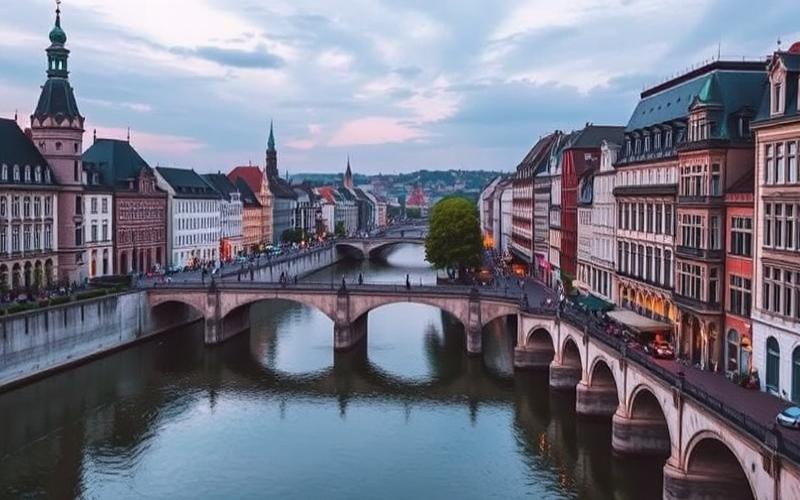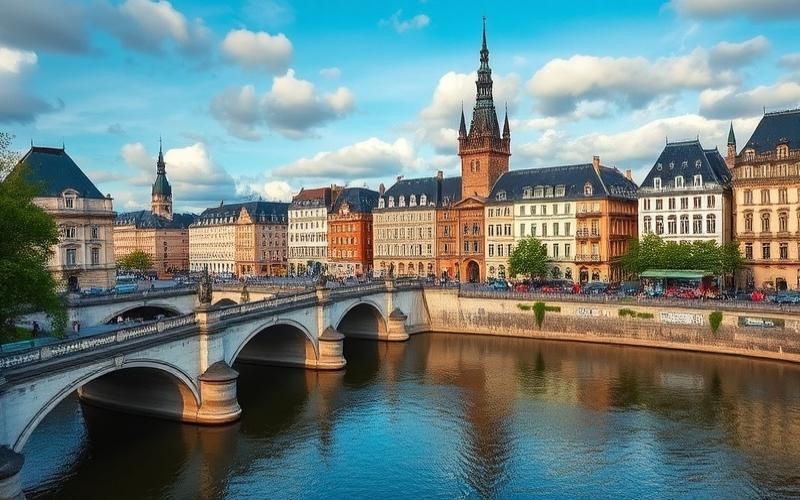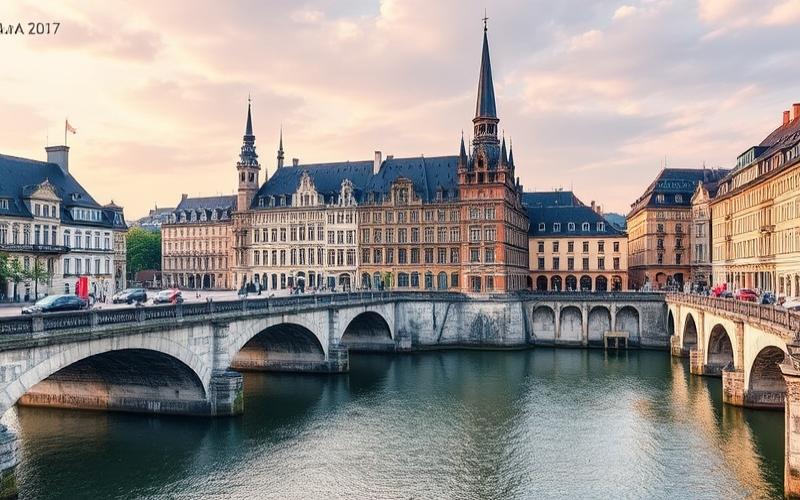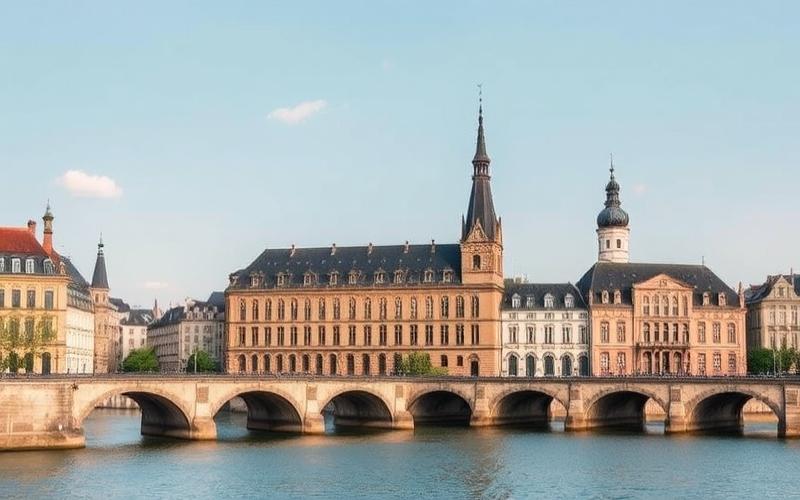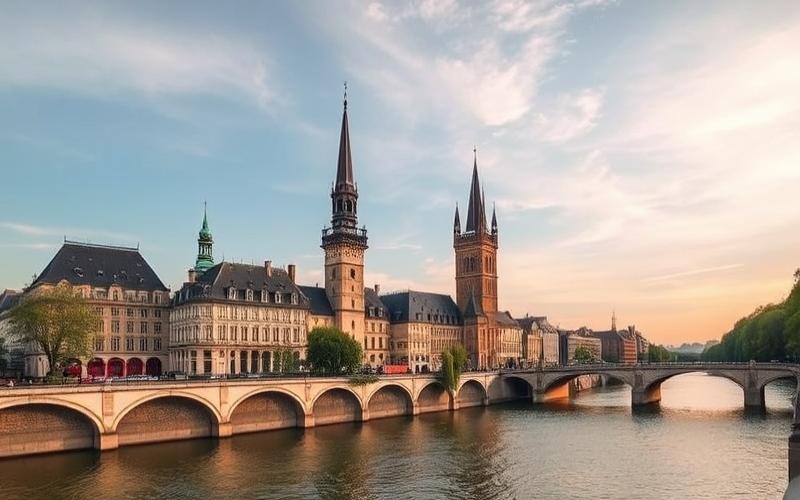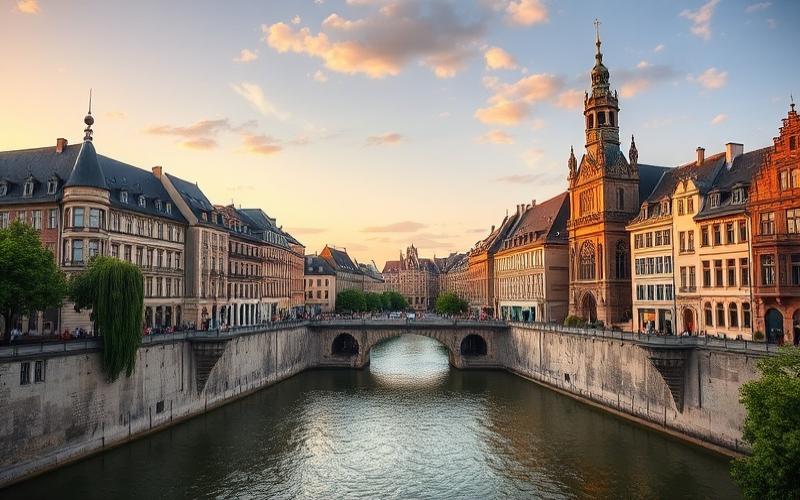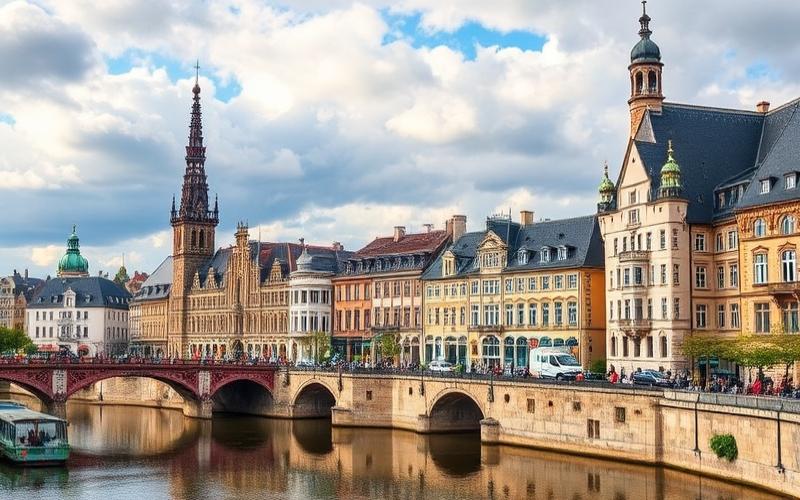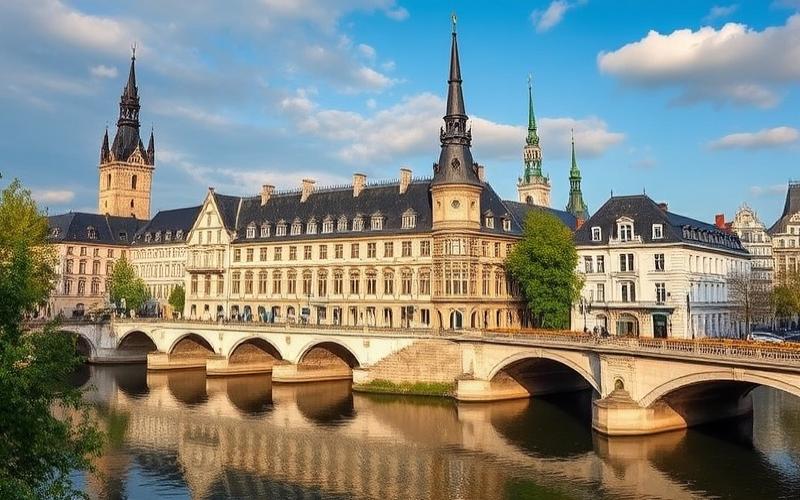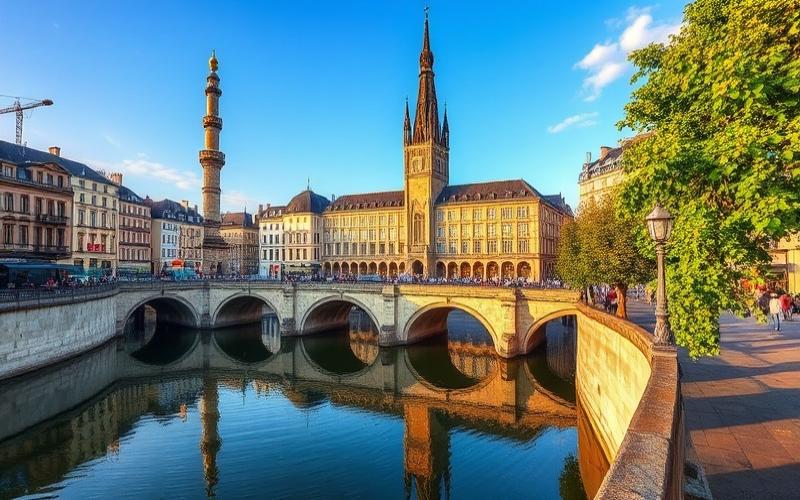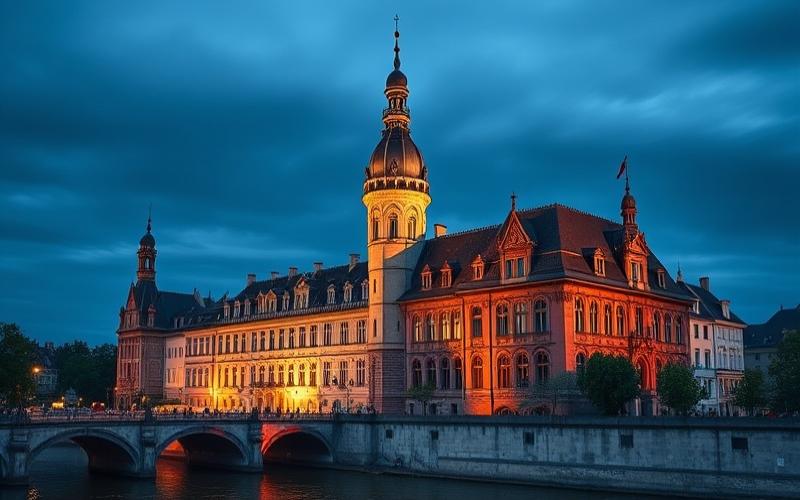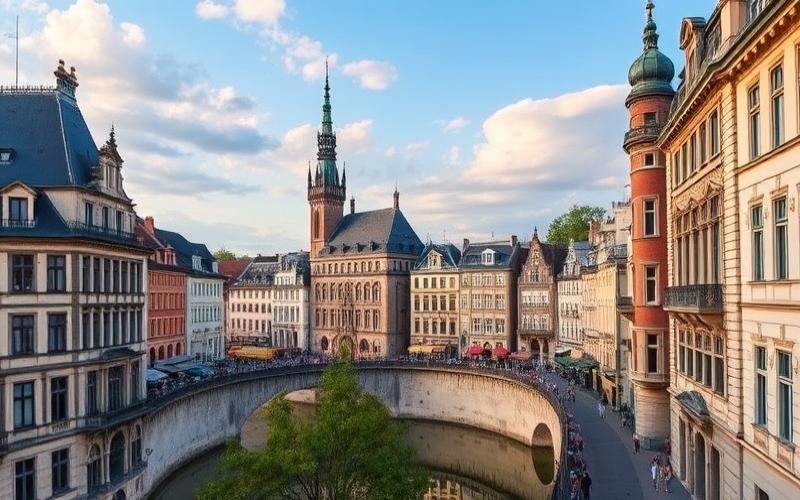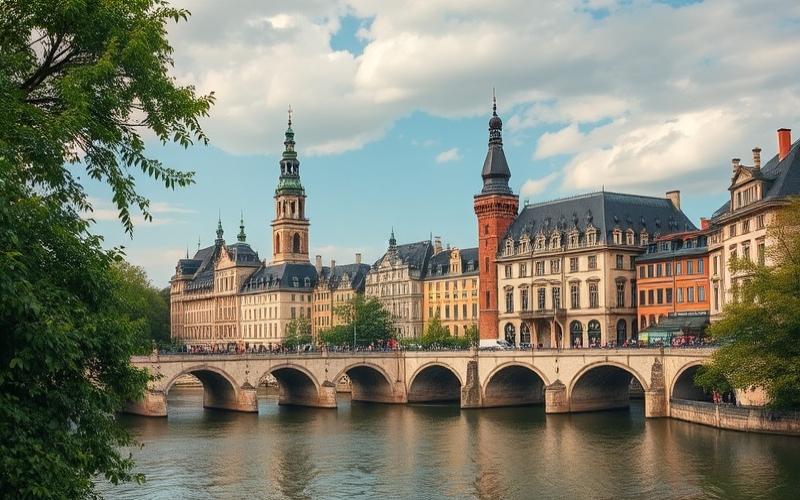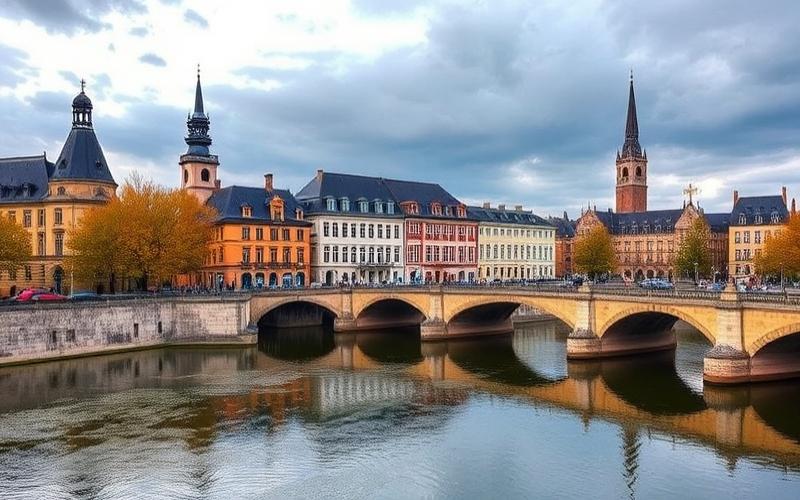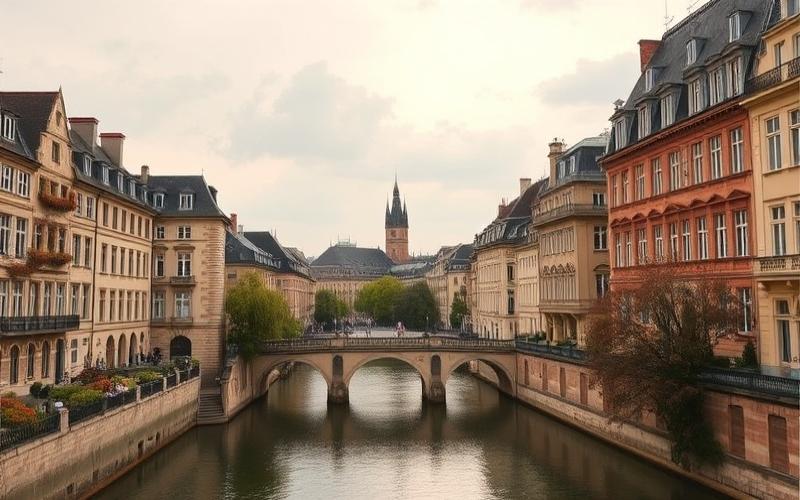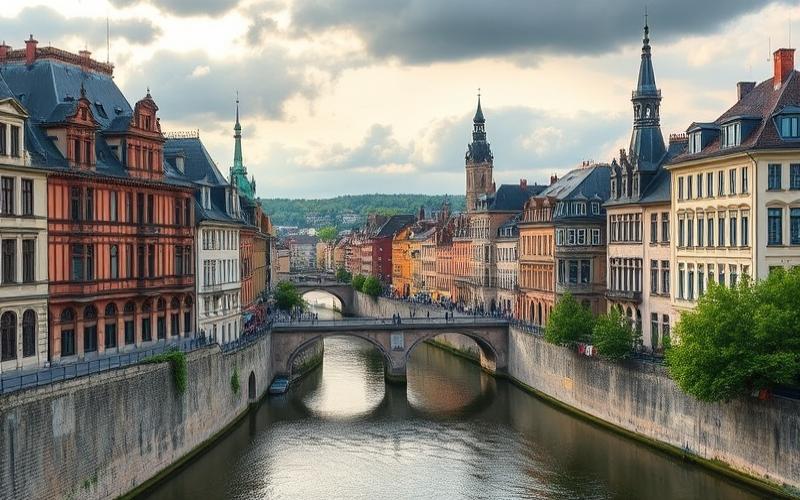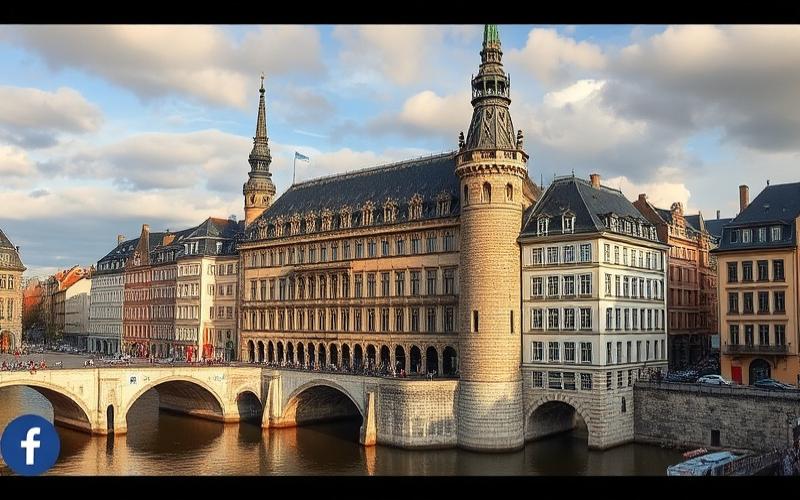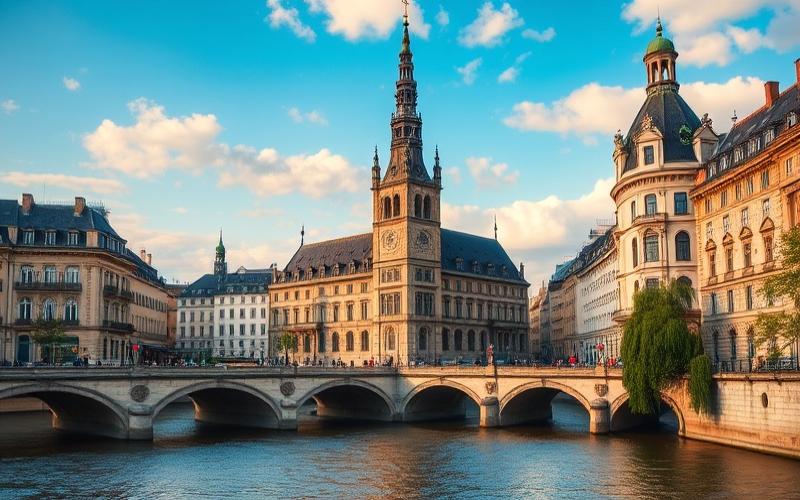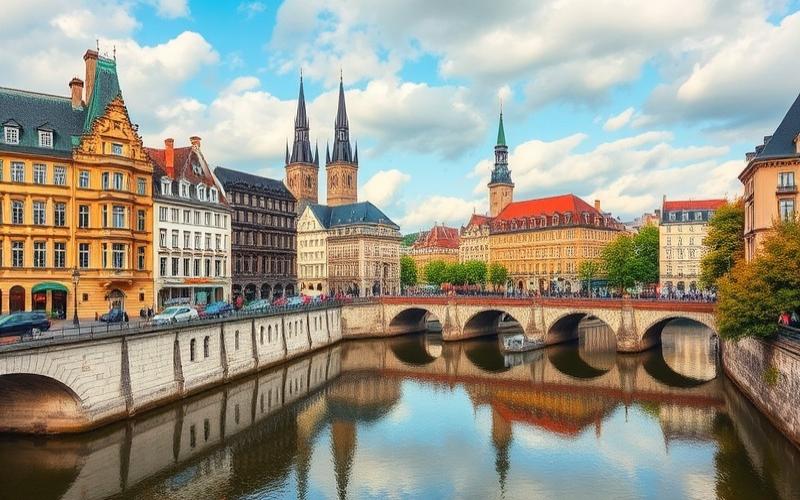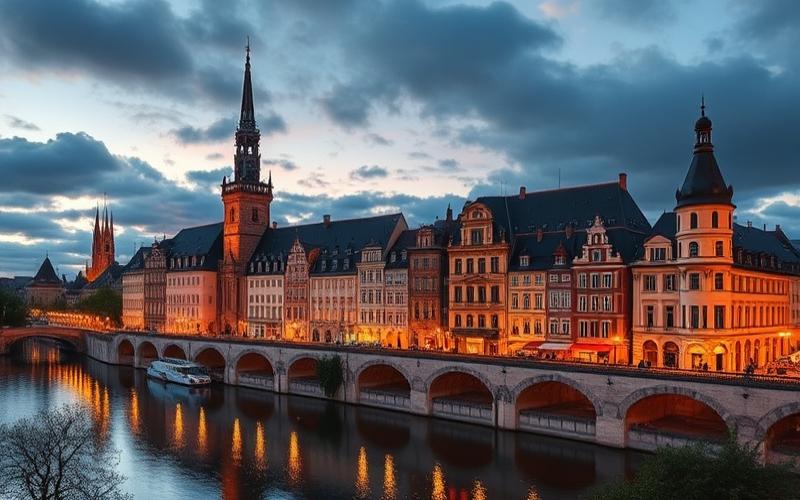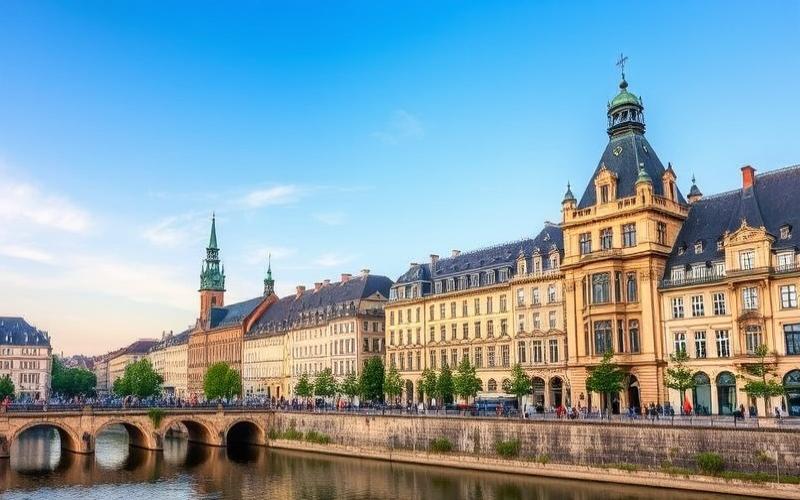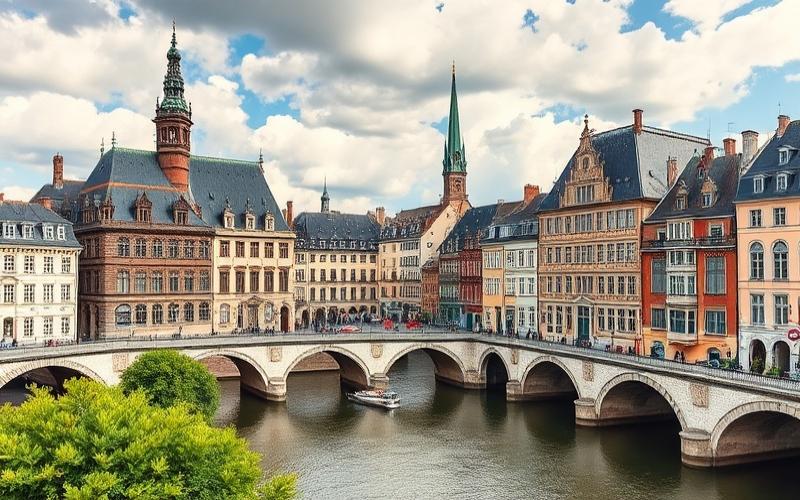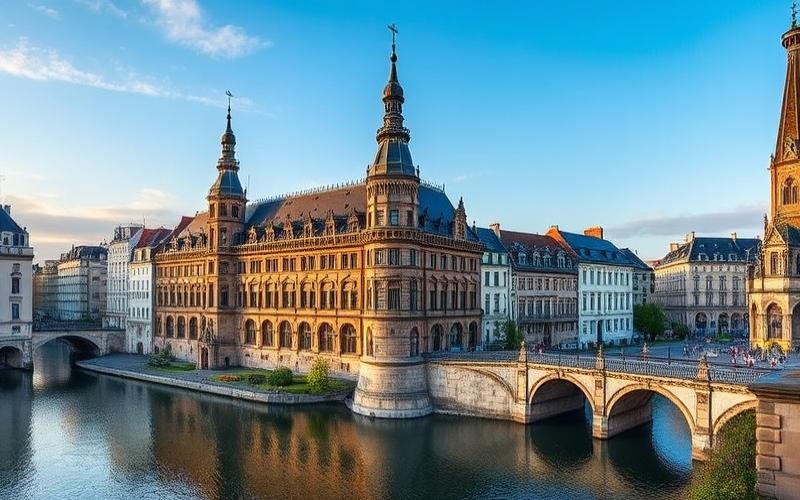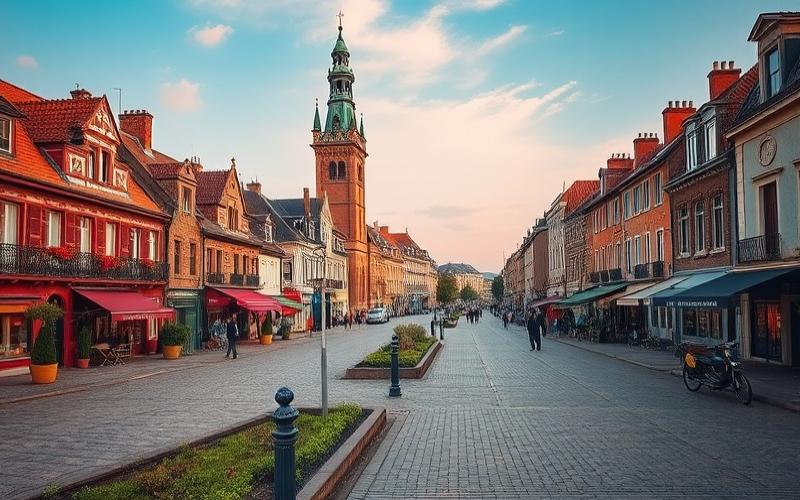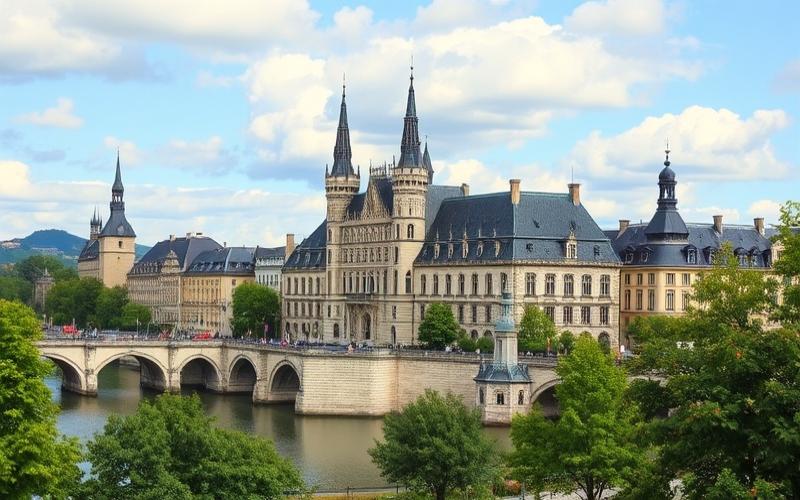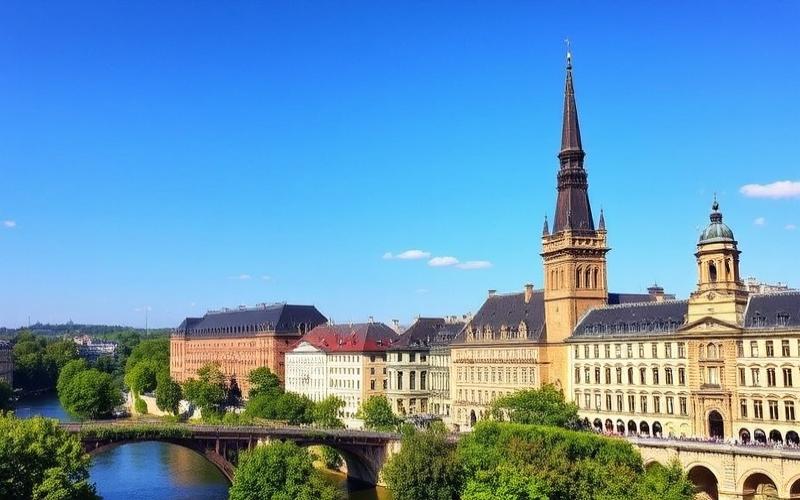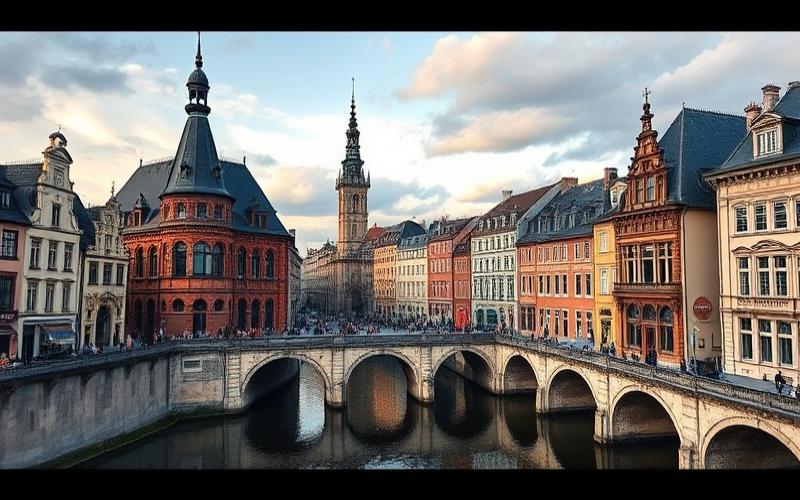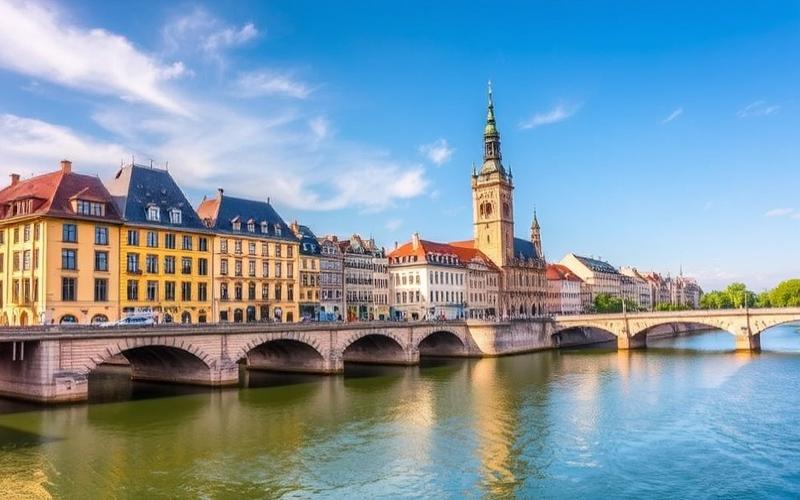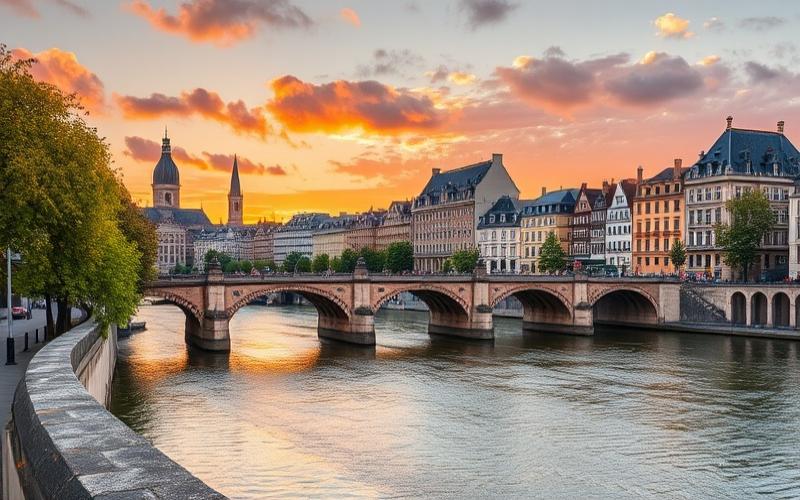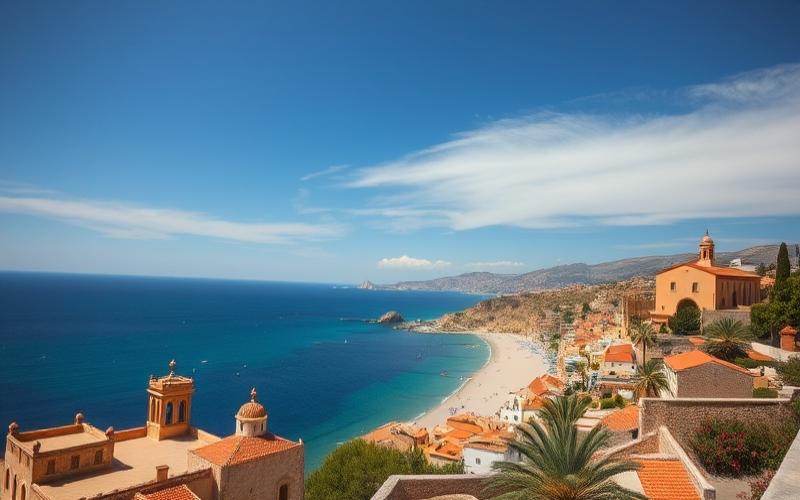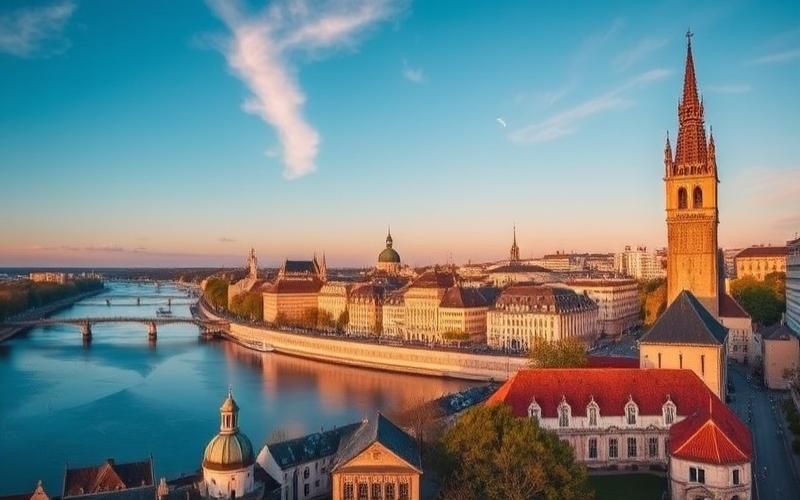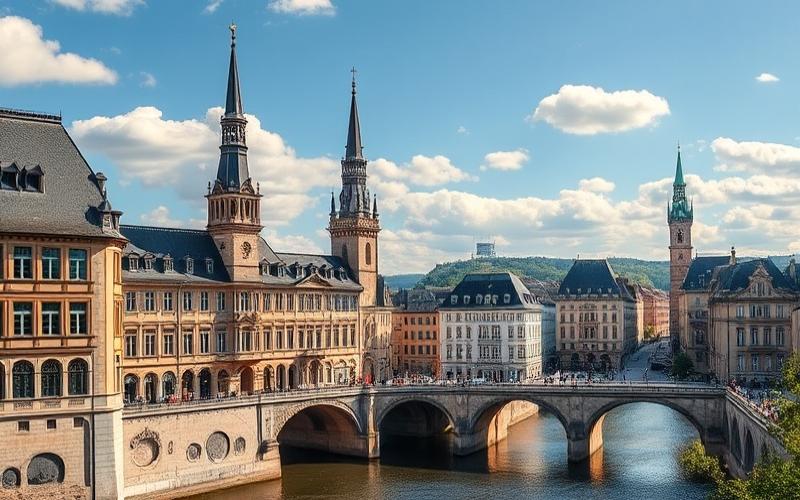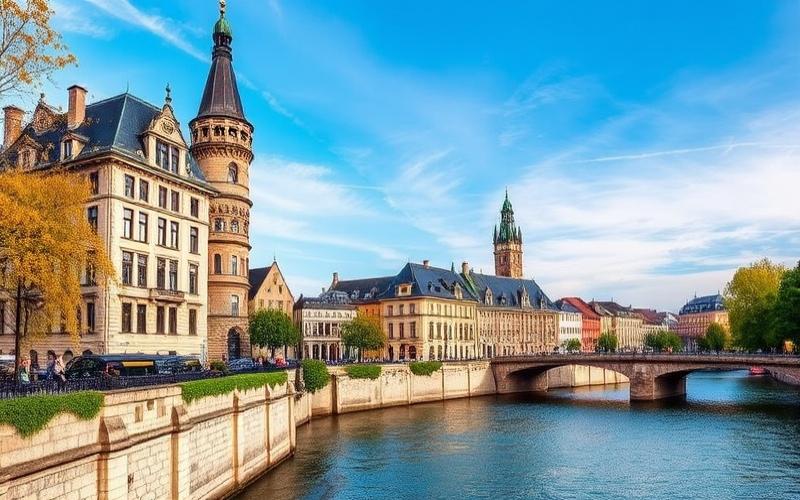
 Published on and written by Cyril Jarnias
Published on and written by Cyril Jarnias
At the heart of Europe, the country of Luxembourg stands out for its rich cultural heritage and vibrant artistic scene, where artist villages are emerging as hubs of creativity and innovation.
Sustainable Cultural Investment or Profitable Business?
But to what extent are these artistic communities a sustainable cultural investment or simply a profitable venture for investors? At the intersection of tradition and modernity, these villages provide a unique framework where artists, artisans, and entrepreneurs can collaborate and thrive, raising questions about the economic and social impact of such projects.
Impact on the Artistic Landscape and Local Economy
By delving into the origins, challenges, and opportunities of these initiatives, this article explores how they shape not only the artistic landscape but also the local economy, inviting readers to reconsider the symbiosis between art and commerce in this unique region.
Artist Villages in Luxembourg: A New Creative Breath
Artist villages in Luxembourg are injecting new dynamism into the national art scene by offering hybrid spaces that foster creation, experimentation, and intercultural dialogue. These places provide local and international artists with unprecedented opportunities to develop their art, collaborate, and reach a wider audience.
Main Contributions to Revitalizing the Art Scene:
- Creation of artist residencies allowing creators to explore new horizons, such as the one organized by Canopée ASBL in the Pfaffenthal district where Pedro Amaral (Portugal) and François Baldassare (France/Luxembourg) worked together on the theme of “The Source,” blending urban nature and creative inspiration.
- Implementation of initiatives like the “Arts & Garden” projects, which encourage interaction between contemporary artistic practices, urban ecology, and citizen involvement.
New Initiatives & Collaborations Fostering Creativity:
- Regular organization of public events: festivals, collaborative workshops, group or multidisciplinary exhibitions.
- Launch of platforms for young talents like the Future Talent Stage, which offers a dedicated stage for artistic emergence with selection based on applications followed by public voting. Finalists perform at a flagship event bringing together industry professionals and enthusiasts.
- Growing involvement of transdisciplinary artists (DJing, sound/visual performance) such as Dance Divine on Luxembourg’s village stages.
Attraction of Local & International Young Talents:
- Facilitated access to shared spaces: shared studios for visual/multimedia production; inspiring urban gardens; multifunctional spaces adaptable to project needs.
- Increased visibility through temporary or permanent exhibitions open to both emerging and established artists.
- Strengthening of professional networks through meetings with foreign guest curators or participation in international competitions/residencies.
Impact on Artistic & Cultural Diversity:
| Dimension | Observed Effect |
|---|---|
| Aesthetic Diversity | Multiplication of represented styles: contemporary painting, digital installations… |
| Cultural Openness | Marked presence of European and extra-European artists in residencies |
| Social Inclusion | Participatory projects involving local schools or community associations |
Opportunities Offered to Artists:
Residency
- Temporary accommodation in a stimulating environment
- Networking with international peers
- Occasional logistical/financial support
Exhibition
- Group or solo exhibition accessible to the general public
- Possibility of direct sales without intermediaries
Sale
- “Open door” events promoting local purchasing
- Associated digital platforms distributing original works
Specific Examples That Redefined the Cultural Dynamic:
Canopée ASBL (Pfaffenthal) – Pioneering space blending international residency & shared garden around the nature/culture theme.
Village Stage/Future Talent Stage (Hollerich) – Launchpad stage revealing a new generation of multidisciplinary artists each year at major public events.
Reactions from Local Communities/Authorities:
- Strong institutional support through municipal/departmental grants
- Growing engagement from residents via guided tours/children’s/adult workshops
- Positive coverage in regional media highlighting social/cultural impact
Contribution to a Sustainable/Modern Cultural Identity:
Luxembourg’s artist villages play a key role in developing an open contemporary identity, based on creative sharing, collaborative innovation, and territorial roots while remaining connected to global artistic networks.
Thus, these cultural ecosystems actively contribute to Luxembourg’s international influence while consolidating its local social fabric through an inclusive approach oriented toward the future.
Good to Know:
Artist villages in Luxembourg, such as those in Beckerich and Differdange, are breathing new life into the country’s art scene by encouraging collaborations between local and international young talents. They offer residencies, exhibition and sales spaces, which attract diverse artists and energize cultural diversity. These initiatives not only foster the emergence of new art forms but also contribute to building a modern and sustainable cultural identity. The enthusiastic reception from local communities reflects a passion for these innovative places, while bringing economic opportunities through increased cultural tourism.
Investing in Artistic Real Estate: An Asset for Luxembourg
Particularities of the Artistic Real Estate Market in Luxembourg
The artistic real estate market in Luxembourg is distinguished by a proactive cultural policy and favorable tax incentives for players in the artistic sector and investors. The state mandates the integration of artistic works in public buildings funded by the state, municipalities, or public institutions, with the obligation to allocate at least 1% of construction costs to commissioning or acquiring works of art. This measure, governed by the law of March 8, 2023, aims to stimulate artistic creation and encourage investment in art integrated into real estate.
Tax and Regulatory Advantages for Investors:
- Flat-rate deduction of 25% of operating revenue for independent professional artists, up to a limit of €12,500 per year.
- Income tax exemption for artistic and academic prizes awarded by public organizations.
- Possibility of benefiting from more favorable taxation for exceptional income from artistic activity.
- Extension of incentive tax measures for real estate (until June 2025), such as the “Bëllegen Akt” (reduction in deed fees), rental tax credit, accelerated depreciation at 6% on certain properties, and reduction in taxation on real estate capital gains.
Potential Impact of Artistic Real Estate on the Local Economy
Investment in artistic real estate, particularly in artist villages, generates significant economic and cultural benefits:
- Revitalization of the local fabric through the creation of direct (artists, artisans, gallery staff) and indirect (restaurants, tourism, services) jobs.
- Enhancement of heritage and improvement of the attractiveness of rural or peripheral areas.
- Strengthening of cultural offerings through the multiplication of exhibition spaces, residencies, and artistic events open to the public.
- Spillover effect on the local economy: increase in tourist traffic, creation of businesses and services related to artistic presence.
Examples of Benefits for Artist Villages:
- Creation of a cultural hub recognized at the national or cross-border level.
- Involvement of residents in cultural life and consolidation of local identity.
Types of Real Estate Investments in Artist Villages
| Type of Investment | Description | Potential Beneficiaries |
|---|---|---|
| Purchase of Art Galleries | Acquisition of exhibition or sales spaces | Private investors, communities |
| Artist Studios | Workspaces dedicated to artistic creation | Artists, cultural associations |
| Artist Residencies | Temporary or permanent housing | Artists, foundations, institutions |
| Multipurpose Spaces | Rooms for exhibitions, conferences, workshops | Municipalities, cultural promoters |
Challenges for Investors
- Real Estate Speculation: risk of price increases making access difficult for artists and threatening the social balance of the village.
- Preservation of Local Cultural Identity: need to reconcile economic development with respect for heritage and traditions.
- Balance Between Profitability and Cultural Mission: search for sustainable economic models to ensure accessibility and artistic diversity.
Main Challenges:
- Land pressure and competition with other land uses.
- Need for coordination between public and private actors.
- Adaptation of regulatory standards to preserve the authenticity of places.
Concrete Examples of Successful Investments in Luxembourg
- Implementation of the law on the integration of artistic works in public buildings, with the creation of artistic committees and practical guides to support project leaders.
- Development of artist villages where the purchase of studios and creation of residencies have attracted international creators, while energizing the local economy and strengthening Luxembourg’s cultural image.
- Example of collaboration between local authorities and private investors to rehabilitate historic buildings into multifunctional artistic spaces, generating new economic and cultural synergies.
Key Takeaway:
Artistic real estate in Luxembourg relies on an advantageous tax framework, proactive regulation, and a strong will to support creation, thus offering investors an environment conducive to profitability while contributing to the enrichment of the local cultural and economic fabric.
Good to Know:
The artistic real estate market in Luxembourg presents unique investment opportunities, benefiting notably from attractive tax advantages and a favorable regulatory framework that encourage investors to take an interest in the country’s artist villages. These investments, such as the purchase of galleries, studios, or artist residencies, not only energize the local economy but also strengthen the Luxembourg cultural fabric by attracting creators and visitors. However, investors must carefully navigate between the temptation of real estate speculation and the need to preserve local cultural identity, a crucial balance to avoid gentrification and enhance artistic heritage. A striking example is the development of creative spaces in the Wiltz region, where targeted investments in cultural infrastructure revitalized artistic exchanges while preserving the authentic charm of the region.
Creative Eco-Villages: Toward Sustainable Renovation
A creative eco-village is an intentional community that combines environmental sustainability, social innovation, and collective artistic production. This concept aims to create ecological lifestyles (permaculture, renewable energies, bioclimatic construction), while integrating art as a vector of community expression and cultural transformation. In Luxembourg, this model fits into a logic of sustainable urban planning seeking to reinvent the links between nature, society, and creativity.
Main Characteristics of Creative Eco-Villages in Luxembourg:
- Environmental:
- Use of renewable energies
- Ecological construction
- Promotion of local biodiversity
- Social:
- Shared spaces fostering community living
- Participatory governance
- Intergenerational and intercultural inclusion
- Artistic:
- Collective workshops (visual arts, music)
- Temporary or permanent artistic residencies
- Cultural festivals open to the territory
| Eco-Village | Location | Artistic Initiatives | Particularities |
|---|---|---|---|
| Elmen | Capellen | Collaborative workshops with local artists; seasonal cultural events; modular spaces for temporary exhibitions | Sustainable urban planning: affordable housing, central green spaces conducive to participatory projects |
| Pilot projects inspired by GEN* (under consideration) | Various rural or peri-urban Luxembourg sites | Preparatory work for residencies for visual artists or musicians; shared gardens associated with artisanal workshops | Research on social mix & innovation in governance |
Advantages in Terms of Sustainable Development and Cultural Innovation:
- Significant reduction in ecological footprint through reasoned collective living.
- Creation of an environment conducive to dialogue between artistic disciplines and ecological practices.
- Strengthened local dynamic through regular organization of public events.
List of Potential Benefits:
- Enhancement of natural heritage through land art or in-situ installations.
- Acceleration of social innovation transfer (circular economy).
- Regional cultural influence through regular hosting of national/international artists.
Creative eco-villages also contribute to attracting both artists and investors:
- Creators benefit from a unique framework allowing artistic experimentation and community immersion.
- Institutional investors find a hybrid model combining moderate but sustainable profitability (green real estate valuation) and measurable social impact.
This model can be economically viable under certain conditions:
- Diversification of funding sources, notably initial public grants, private cultural patronage, income from paid workshops/residencies.
Identified Challenges:
- Sustaining funding beyond occasional grants.
- Adapting structures to sometimes restrictive urban planning regulations in Luxembourg.
- Preserving the original mission against commercial risks or artistic gentrification.
Addressing these challenges requires rigorous management combined with strong local roots and constant dialogue with local authorities to obtain innovative exemptions.
Creative eco-villages thus represent a living laboratory where engaged art, advanced ecological practices, and inclusive governance coexist. Their success could inspire a new – more collaborative – way of living together throughout Luxembourg while reconciling contemporary artistic expression and ecological transition.
Good to Know:
Creative eco-villages in Luxembourg represent an ingenious fusion between art, ecology, and community, anchored in sustainable development. These villages implement initiatives where artistic practices coexist with ecological solutions, such as the use of renewable energies and sustainable agriculture. A notable example is the eco-village in Beckerich, where artistic workshops and educational conferences are regularly held, attracting both artists and investors. These initiatives foster cultural innovation while promoting ecological and social transformation, offering a new approach to cohabitation that could inspire other regions of the country. However, these projects must overcome challenges, particularly in terms of sustainable funding and adaptation to local regulations, while preserving their ethical mission. Nevertheless, their model contributes not only to attracting artists but also to their economic profitability, thus demonstrating inspiring potential for other communities.
Disclaimer: The information provided on this website is for informational purposes only and does not constitute financial, legal, or professional advice. We encourage you to consult qualified experts before making any investment, real estate, or expatriation decisions. Although we strive to maintain up-to-date and accurate information, we do not guarantee the completeness, accuracy, or timeliness of the proposed content. As investment and expatriation involve risks, we disclaim any liability for potential losses or damages arising from the use of this site. Your use of this site confirms your acceptance of these terms and your understanding of the associated risks.

